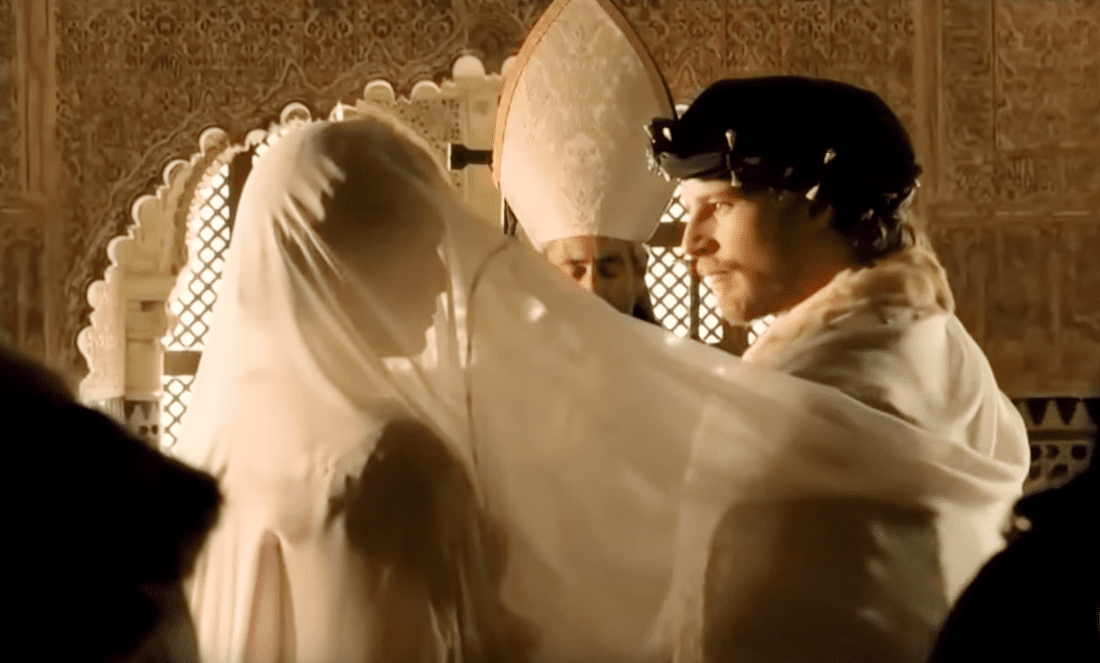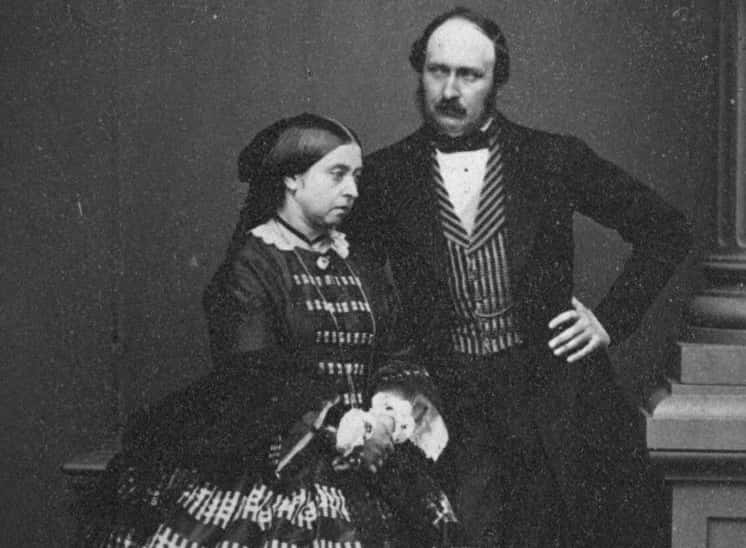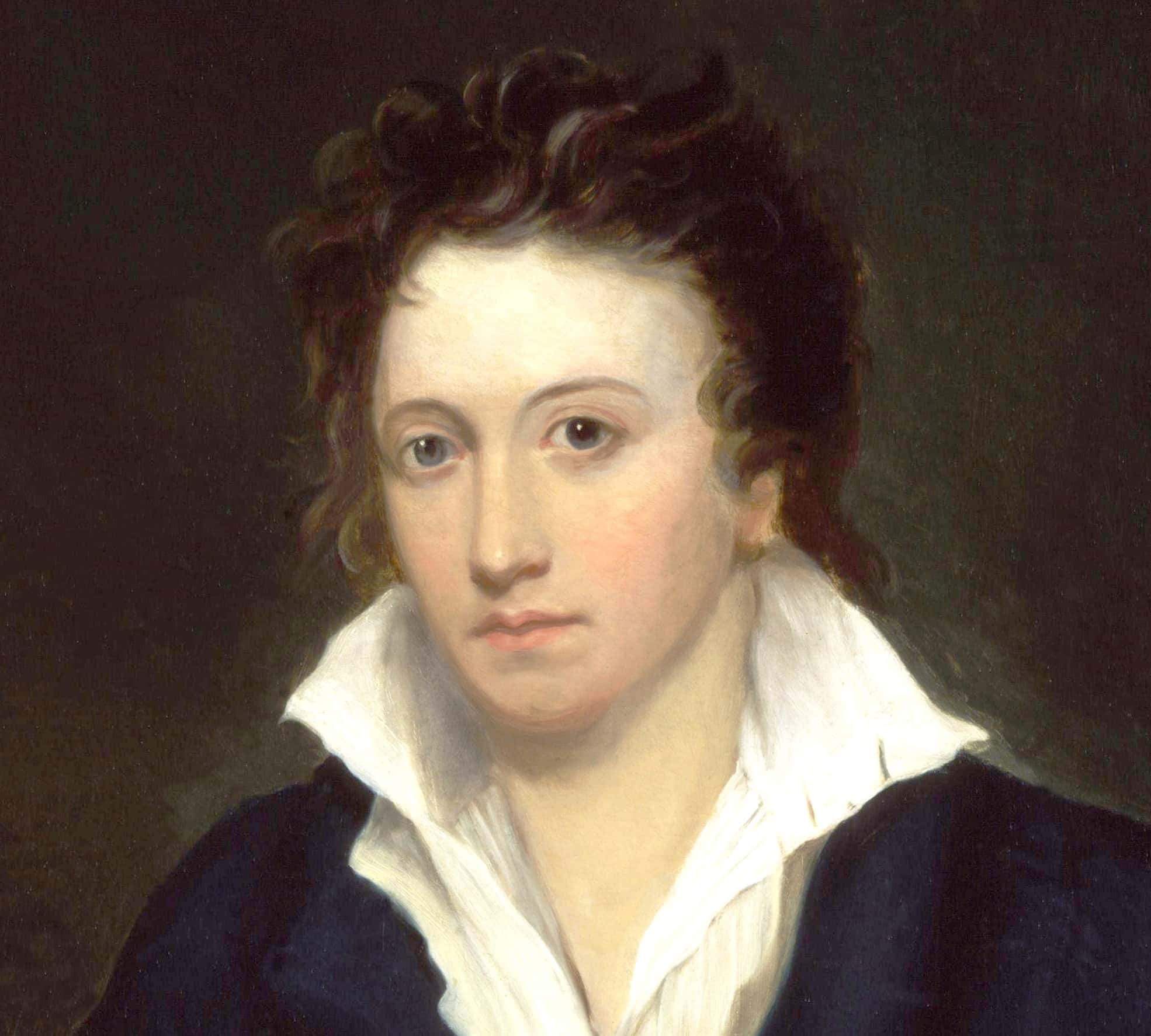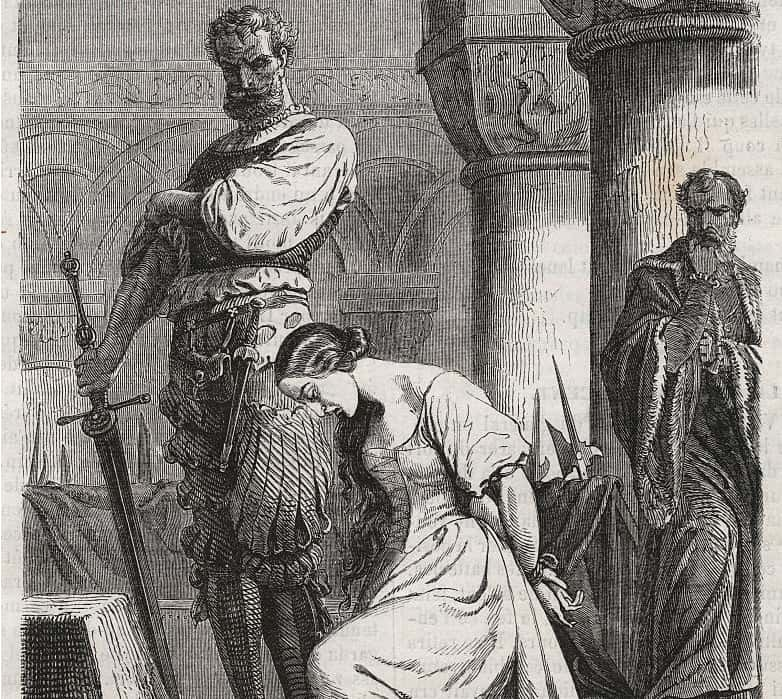History's Most Tragic Star-Crossed Lovers
Forget Romeo and Juliet. The stories of these real-life star-crossed lovers are far more tragic and chilling than anything Shakespeare ever wrote.

1. She Definitely Makes for a Prettier Minotaur
Rosamund Clifford is a woman of such legend that it is nearly impossible to figure out the pure facts about her very real life. According to legend, she was a daughter of either a steward or a lord, and she captured the eye of King Henry II of England. She is recorded as having been the "great love of his life". So besotted of her was he that in the legends, he is said to have constructed a hideout for her in the middle of a maze he had built in Woodstock, Oxfordshire.

2. My Lover and My Wife
However, there was a dark reason for Henry II's secrecy about his love: he already had a queen at his side. In the legend, Eleanor of Aquitaine ruthlessly makes her way through the maze to find her husband’s mistress. When she found Rosamund, Eleanor supposedly offered her a dagger or a bowl of poison and told her to choose. Rosamund chose the latter and met her end.
3. Al and Vicky 4 Life
While royal marriages were not usually made for romantic reasons, Queen Victoria got lucky with Prince Albert. Victoria was passionately in love with Albert until his tragic end in 1861—and even beyond that. She took to wearing black for the rest of her 63-year reign, never remarrying, and mourning Albert’s passing for nearly as long—and her bereavement had an even darker side.
4. Break Glass in Case of Return From the Grave
For years after Prince Albert's passing, Victoria had a morbid way of keeping his memory alive. She insisted his personal rooms in Buckingham Palace be kept prepared for him in case he somehow returned. A bowl of hot water for shaving purposes was always placed in the room, and a new change of clothes was always laid out on the bed.
5. I Wash My Hands of You
At age 16, Mary Shelley met the poet Percy Bysshe Shelley, who was 22 and married at the time (albeit unhappily). The pair fell in love and, with no thought to the consequences, they ran off to Europe with her stepsister Clare. When she came home pregnant, it infuriated her father to the point of disowning her for a time.
6. Free Love
Percy Shelley wasn’t exactly the pillar of moral society, and luckily for him, this was one thing that he shared with his future wife. She was a big believer in carnal freedom and agreed with his views on free love. It didn’t bother her at all that she was the other woman, and he was totally fine with her flirting with his best friend, Thomas Hogg.
It’s also possible that Percy had an affair with Mary’s stepsister Clare, but it’s never been proven. Boy were they in the wrong century!
7. Double Dipping
Though Mary and Percy Bysshe Shelley are seen as an iconic pair of star-crossed lovers nowadays, their love at a hugely dark side. When Percy met Mary, he was already married to Harriet Westbrook. After Percy went off with Mary, Harriet's pregnant body was found floating in the Serpentine in Hyde Park, London, in 1816. She had apparently drowned herself.
8. Suspicious Circumstances
Harriet's passing freed him up to marry the (also) pregnant Mary, but the circumstances of his wife's passing were a little dicey. There was some speculation that Mary’s father had Harriet Shelley meet her end so that Mary’s child wouldn’t be born out of wedlock, but she was probably just really unhappy at being abandoned. Wouldn’t you be?
 Mary Shelley, HanWay Films
Mary Shelley, HanWay Films

History's most fascinating stories and darkest secrets, delivered to your inbox daily.
9. Unrequited Love
This wasn't the only life their love destroyed. Shelley’s older half-sister Fanny Imlay was the first of the sisters to meet Percy Shelley, and was rumored to have fallen in love with him first. Later that year, Godwin sent Fanny to Wales, possibly in an attempt to keep her apart from Percy. In 1816 (the same year Harriet passed), she took her own life by ingesting a fatal dose of laudanum (a syrup made of opium).
Many biographers have speculated that she was still in love with Percy Shelley and took her own life because she could no longer handle his rejection, not to mention the fact that he was beginning a relationship with her own sister.
10. Macabre Keepsake
Shelley was just 24 when her husband Percy met his end by drowning, and she kept an unusual keepsake to remember him by. When the body was cremated, everything burned except for his heart, which had calcified. Instead of burying it, she wrapped the heart in a silken shroud and supposedly carried it with her almost everywhere she went.
One year after her passing, the heart was found in her desk wrapped in the pages of one of Percy’s final poems. Totally creepy, but also romantic. Mary never married again after losing Percy.
11. Accident or Murder?
Percy Shelley’s drowning has always been considered suspicious. Some people close to Shelley argued that he was depressed and that his passing may not have been accidental. There are even theories that Shelley was executed for political gain. Shelly was no angel: He was always in debt, and his philandering reputation didn’t exactly make him a beloved public figure.
There was also the little problem that he was an outspoken atheist. He was so disliked in some sectors that it wasn’t impossible to believe that either an angry creditor took his life, or that someone else plotted to assassinate him. Was it foul play or just an unfortunate accident? You decide!
 Mary Shelley, HanWay Films
Mary Shelley, HanWay Films
12. Layla… Got Me on My Knees, Layla…
In the ancient Persian stories (said to be semi-historical, though there are many different versions of the legend), Qays ibn al-Mulawwah fell head over heels for Layla al-Aamiriya, and he wanted to let the world know through his poetry. He was called "Majnun" by the locals who thought he was crazy with love. Layla’s father didn’t want his daughter anywhere near that crazy fool, so he married her off to someone else.
The two forlorn lovers were forced apart until Layla’s passing. Soon after she had been laid to rest, Majnun’s body was found by her grave. Before he passed on, he had carved the last verses of his poetic career into a rock nearby.
13. You Guide My Way
In accordance with Greek myth, Hero was a priestess of Aphrodite, the goddess of love. Hero fell in love with Leander, a handsome young man. The two of them lived on either side of the Hellespont, a strait connected to the Mediterranean. Every night, Leander would swim across the Hellespont to be with Hero, who would light a lamp at the top of the tower in which she lived so he knew where to go.
14. A Monument Out of Love
Shah Jahan was besotted with Mumtaz Mahal, whom he nicknamed the "Jewel of the Palace". Objectification aside, Jahan was so distraught when Mahal lost her life during childbirth that he constructed the Taj Mahal in her honor. Construction lasted 23 years, but when it was completed, and Jahan had also passed on, he and Mahal were laid there in their final resting place.
15. Amour in Antiquity
In one of the classic stories of love, Egyptian queen Cleopatra famously seduced the Roman general Marcus Antonius (better known now as Mark Antony). From the start, things were troubled in their relationship. For one thing, Antony was already married, at one point to a woman no less than Octavia, the sister of Octavian, heir to Julius Caesar and rival to Antony.
Antony’s affair and adoption of an eastern lifestyle infuriated the Romans. Octavian himself would feed the fires against Antony, gaining power with his rival’s unpopularity.
16. Torn Apart by Battle
The final straw for Mark Antony and Cleopatra was when Antony’s power in Egypt went to his head, and he began allotting territories to his children. Not only that, Cleopatra’s son by Julius Caesar, Caesarion, was declared to be the true heir of Caesar. Octavian eventually raised arms against Antony, with nearly full Roman support.
The conflict resulted in Antony and Cleopatra taking their own lives as Octavian’s forces bore down upon them in Egypt.
17. You Can’t Keep Them Down
Despite their tragic end, and despite Octavian’s attempts to smear their names in history as he became Emperor Augustus, the story of Antony and Cleopatra has been frequently dramatized and (arguably) romanticized even further than it ever was in real life. Shakespeare wrote about them, and famed Hollywood couple Richard Burton and Elizabeth Taylor starred in a gaudy, highly expensive movie about their story.
18. Boy Meets Girl
Her name was Mildred Jeter, a woman who was identified as black, but she herself was said to identify as "Indian-Rappahannock". His name was Richard Loving, the descendant of a white slave-owning family who had fought with the Confederates in the Civil War. Both of them grew up in a small community in Virginia and fell in love from a young age.
19. Law Intervenes
For centuries in the US, laws existed that forbade interracial marriage. These laws survived in one form or another in various southern states during the year 1958, when Richard and Mildred were quietly married in Washington D.C. in an attempted loophole of Virginia’s laws. When they returned home, however, they were in for a disturbing surprise. An anonymous tip led to them being locked up for living as man and wife, while their marriage certificate was discredited.
They were sentenced to a year in prison, suspended on the condition that they stay out Virginia for 25 years.
20. Love Conquers
Eventually, Richard and Mildred Loving took their case as far as the US Supreme Court. In 1967, the SCOTUS decided that the anti-interracial marriage laws were unconstitutional, thereby making the laws invalid. To this day, Richard and Mildred Loving’s triumph against racism is celebrated on the 12th of June, known as Loving Day.
Finally, a happy ending!
21. Always the South…
As was portrayed in 12 Years a Slave, Solomon Northup was a free black man in New York until he was kidnapped and sold into slavery in 1841. He spent 12 years in captivity, even as his wife and children had no idea where he’d gone. His wife finally got word of her missing husband in 1852, followed shortly by his release and return.
 12 Years a Slave, Searchlight Pictures
12 Years a Slave, Searchlight Pictures
22. Once Again, Settlers Ruin Everything
Your view of Pocahontas might be inspired by the Disney film made about her, featuring a star-crossed love between herself and English explorer John Smith. However, the truth may be much darker. Historically, Pocahontas had no romance with John Smith (their age difference was arguably a good reason). Pocahontas is said to have had a husband before she was captured by the English and taken to Europe.
His name was Kocoum, and he and Pocahontas are said to have had a child before Kocoum was (possibly) killed and Pocahontas was captured. Kocoum’s existence is disputed, but if he did exist, it’s a pretty grim love story.
23. On to the Next One
The heir to the Portuguese throne, Pedro, had eyes only for Ines de Castro, a lady-in-waiting to his betrothed, Constance of Castile. Forced into a marriage with Constance to maintain an alliance between their countries, their marriage ended when Constance passed on. Pedro already had multiple kids with Ines at this point, so marrying her seemed like the next natural step.
However, Pedro's infuriated father thought otherwise.
24. Who Knew "Pedro" was Portuguese for "Robb Stark"?
Pedro and his father Afonso argued over who he should marry next. Afonso insisted on a princess (any princess!), while his son refused and said that he'd only marry Ines. Ultimately, it ended in the worst possible way. Afonso sent three of his henchmen after Ines, and they brutally took her life in front of one of her own children.
But the twisted tale doesn't end there.
25. This Means War!
In response to the murder of his beloved Ines, Prince Pedro ruthlessly hunted down the men responsible. In 1361, he captured two of the three men, and exacted a bloody revenge. The men were publicly executed by having their hearts ripped out, since Pedro reasoned that neither men could have a heart after breaking his own. Poetic, in a very brutal way.
26. The Forgotten Bride
Catherine Howard reigned for barely a year-and-a-half. She seemingly left behind no children, lasting charities, or legacies—except for one huge tragedy. She was the fifth wife of King Henry VIII, and only the second English queen to ever be executed for adultery and treason.
27. Marriage 1.0
Before she was ever queen, a man named Francis Dereham spelled the end for Catherine Howard. It involves judicial loopholes, so let us explain: when Catherine was a young teenager, she became "lovers" with Dereham, a secretary of her step-grandmother’s estate, who was about 10 years older. This union was definitely consummated. They were engaged to be engaged, referring to each other as "husband" and "wife". Under the laws of the Church, this cohabitation, plus consummation, would equal something as good as a "real" marriage…if they exchanged pre-contract vows.
However, the relationship ended and Dereham went away to Ireland. Some speculate the couple did, in fact, exchange vows before he left. If this is true, Catherine was as good as already married when she wed Henry VIII—and had therefore committed treason.
28. Keep It in the Family
Then, of course, was the matter of Thomas Culpeper, the man who Catherine truly loved—even though he was her cousin. She considered marrying him, but then Henry VIII came along. Unfortunately, at least the emotional aspect of their relationship continued after she was married.
29. Read Between The Lines
Only two pieces of Catherine’s writing survive: her love letter to Thomas Culpeper, written while she was Queen, and her confession.
30. When It Rains, It Pours
The earliest investigations against Catherine weren’t for adultery; the pre-contract to Francis Dereham has been enough to probably remove her from the throne, maybe not execute her for treason. But when Thomas Cranmer questioned one of Catherine's ladies-in-waiting, she broke down and told them about Catherine’s meetings with Thomas Culpeper. Not what they were looking for, but it was more than enough.
31. This Is Why You Clean Your Inbox
Catherine had made a fatal mistake. A love letter from Catherine to Thomas Culpeper was discovered in a search through the former’s chambers, written in her distinct handwriting. In the fateful letter, Catherine reveals that her heart belongs to Culpeper, not Henry. As she wrote, "when I think again that you shall depart from me again it makes my heart die to think what fortune I have that I cannot be always in your company".
She signed the letter "yours as long as life endures". That life would not endure long.
32. Getting Ahead
Her ex-"husband," Francis Dereham, was hanged, drawn and quartered for high treason on December 10, 1541. Thomas Culpeper who received the more "dignified" end by a simple beheading on the same date.
33. Crosswords
When Henry VIII learned of Catherine’s emotional affair with his own favorite courtier, Thomas Culpeper, the king reportedly flew into a rage and called for a sword, so he could kill his wife himself. Obviously, he did not go through with his own original wishes and had the matter outsourced.
34. My Bloody Valentine
Catherine was executed on February 13, 1542, just a day before Valentine’s Day. Ironically, it was Henry VIII himself who would make Valentine’s Day an official English holiday in 1537. Who knew he was decreeing a special occasion to be bummed seven years later?
35. Wordplay
Despite what folklore—and shows like The Tudors—have to say about Catherine’s final words, there is no evidence that she ever said "I die a Queen, but I would rather have died the wife of Culpeper" on the scaffold. While it’s fun to imagine Catherine using her last moments to snub her scary husband, it’s a myth: she stuck to the traditional words about mercy and deserving "to die a thousand deaths" for betraying a king who always treated her so "graciously". She was about 19 years old.
 The Tudors, Showtime Networks
The Tudors, Showtime Networks
36. The Ultimate Star-Crossed Lovers
Before there was Romeo and Juliet, there was Héloïse and Abélard—the star-crossed medieval lovers whose affair crossed social boundaries of class, education, gender, and even the decorum of the Church itself. When their affair began, the pair were a tutor and his pupil; when it ended, they were a monk and nun, separated by scandal but still in each other’s lives thanks to the power of written word.
The journey from the classroom to the Church was fraught with love letters, pregnancy, broken vows, and yes, even castration.
37. Looking for Something Causal
Abélard wasn’t looking for long-lasting romance: he was looking for a booty call. In a letter, the tutor admitted himself that he was already on the look-out for a potential mistress to help him kill time between study sessions. Although several ladies piqued his interests, only Héloïse snared his attention for long because, in his words, he wasn’t partial to "easy pleasure".
38. Make Me Fight for You
Abélard was attracted to Héloïse’s (apparent) "hard to get" routine. To quote his letters, "I was ambitious in my choice, and wished to find some obstacles, that I might surmount them with the great glory and pleasure". Hey, some guys like the hunt more than the catch.
39. All According to Plan
Abélard based his "plan" to seduce Héloïse on a glance. He saw a beautiful lady on the Parisian streets, who turned out to be Héloïse, and decided he should have her. Abélard found himself in her uncle’s household, where he was hired as a tutor, and the rest was premeditated romantic history.
40. A Star Is Born
Héloïse and Abélard’s affair resulted in a son, whom they named Astrolabe. For the record, an "astrolabe" is also the name of an old-fashion navigational device that helps astronomers figure out the Earth’s position in relation to the stars. Nerd parents will be nerd parents.
41. I Know Something You Don’t Know
To smooth things over with her uncle, re: that illegitimate pregnancy, Abélard agreed to marry Héloïse. However, the marriage had to be kept secret, or else it would ruin the scholar Abélard’s career. Nevertheless, Fulbert began to spread rumors about the marriage as revenge against Abélard’s damage to the family reputation.
42. Cut It Out or I Will
By the time of their son’s birth and their marriage, it was rumored Abélard was already beginning to lose interest in his once-pupil and lover Héloïse—perhaps because he’d sent her to a convent. Shortly after, Héloïse’s uncle Fulbert arranged for a horrific revenge against Abélard. He believed that sending Héloïse to a convent was an attempt to get rid of her, so he arranged for Abélard to be castrated.
This act humiliated Abélard, but also threw a towel over his wandering eye.
43. Take a Hint, Girl
Even after their religious enclosures, Héloïse maintained correspondence with Abélard. She wrote about her still-enduring love for him; Abélard, it was rumored, had reiterated that their relationship was a sin and that they should just commit themselves to God.
44. Together 4 Ever
In 1142, Abélard passed on, aged 63. Héloïse would outlive him by 20 years, later dying in 1163. The couple were ultimately buried side-by-side.
45. Ladies?
Charles V was the ultra-powerful Emperor of the Holy Roman Emperor. With all that power and privilege, it's not surprising that he was something of a womanizer. Several women have been noted as being his mistresses while the monarch was a young bachelor. This changed with his marriage to Isabella of Portugal, however.
Unlike many rulers in history, Charles is said to have remained completely faithful to his wife from the day of their marriage until her final breath.
 Carlos, Rey Emperador, Diagonal TV
Carlos, Rey Emperador, Diagonal TV
46. Love and Marriage
As we’ve hinted before, Charles and Isabella of Portugal remained completely faithful to each other over the course of their marriage, and by all accounts, they lived happily together. Of course, this happiness was often interrupted by distance, as Charles was frequently traveling for one reason or another. During his absences, Isabella ruled Spain as its regent. Her competent politics and governing have been well-documented, even in an era where women were seen as inferior to men when it came to…well, most things, sadly.
 Carlos, Rey Emperador, Diagonal TV
Carlos, Rey Emperador, Diagonal TV
47. Farewell, Beloved
Tragedy struck Charles when his wife, Isabella, succumbed to an infection in 1539 at just 35 years of age. Charles was so devastated that he locked himself in a monastery for two months, fasting and praying in his grief. He never remarried and wore black for the rest of his life in tribute to the loss of his wife.
48. I Love You, Don’t Tell My Wife
Clark Gable was one of the biggest Hollywood stars of his time, and like many stars in Hollywood, he had a wandering eye for women. While he was separating from his second wife, however, he fell for his old co-star from No Man of Her Own, Carole Lombard. Lombard and Gable were finally able to marry after Gable’s divorce was finalized in 1939.
49. Eventually Reunited
Unfortunately, Gable’s bad habits were hard to break, and Lombard was worried that he was looking at renowned actress Lana Turner the wrong way. In 1942, Lombard helped the US government sell war bonds, and then took a plane back to Hollywood rather than take a three-day train trip from Indiana. Sadly, the plane crashed while en route, taking the lives of everyone on board.
50. Everlasting Love
For Clark Gable, the aftermath of the crash was devastating. He drove out to the wreck, reportedly crying out, "Oh God! I don’t want to go back to an empty house". He proceeded to enlist for the Air Force, despite being 41. Many suspected it was an act of self-destruction over the guilt he felt about Lombard's passing.
Surviving the conflict, Gable would get married two more times, but when he passed on in 1960, he was buried next to Lombard.
Sources: 1, 2, 3, 4, 5, 6, 7, 8, 9, 10, 11, 12, 13, 14, 15, 16, 17, 18





















































